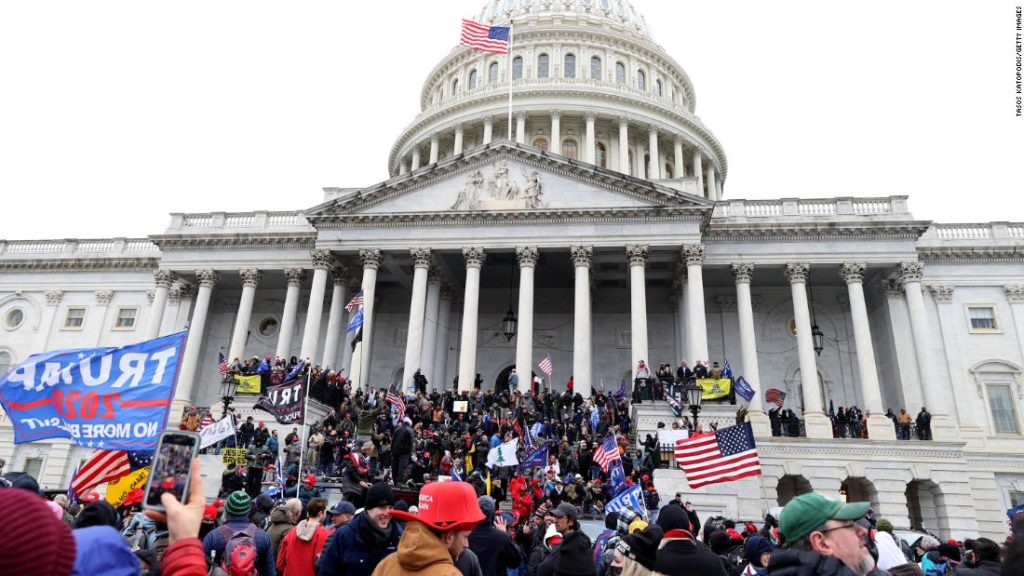When a mob of President Trump’s supporters broke into the US Capitol on Wednesday, they were confronted by a far smaller police presence — and by the end of the day, far fewer of the rioters ended up in custody.
The stark disparity in arrests came even though more DC officers were injured during the Capitol mayhem, which left five people dead, including a police officer.
Even including 14 additional people who were arrested by the US Capitol Police, a separate agency, the number of people both agencies arrested amid Wednesday’s tumult was less than a fourth of those detained by city officers alone on June 1.
Activists in DC said they were shocked that a deadly assault on the heart of American democracy led to far fewer people in police custody than the clashes that erupted during protests over law enforcement brutality.
“It’s so, so insulting to racial justice activists that have been bringing attention to Black lives that have been lost,” said Anthony Lorenzo Green, one of the activists leading the Black Lives Matter DC group. “The way they chose to secure the Capitol was to let everybody go — they let these people back on our streets.”
If Black Lives Matter protesters had tried to enter the Capitol instead of the predominantly White pro-Trump crowd, Green said, “we would be shackled, we would be carried away, we would be shot, we would be dead.”
Fewer arrests, more officer injuries
No law enforcement officers died in DC while responding to the protests and riots over the summer.
Of course, the protests during the summer and the Capitol insurrection this week were very different events — for example, there were likely far more protesters spread out over a wider area of the city last summer than there were on Wednesday.
Kristen Metzger, an MPD spokeswoman, said the department didn’t make more arrests Wednesday in part because, unlike during the summer protests, the city’s curfew wasn’t announced in advance of the incident.
“When we announce (a curfew) in advance, we have enough resources to get people into the vans and we’re ready to make mass arrests,” Metzger told CNN. “Since this was done so late in the day, we weren’t ready to make mass arrests like that until the curfew was put in place later that afternoon.”
Metzger also noted that the Capitol is the jurisdiction of the US Capitol Police and that the district’s police were only called for assistance after demonstrators breached the building’s security.
“At that point, it was just controlling the situation and getting them out of the Capitol building,” she said.
“We are a city that deals with mass demonstrations all the time,” Hopkins said. “For any law enforcement agency in this city to say they were caught flat-footed or they didn’t know what was coming is just incredibly false.”
There will likely be additional arrests connected with the Capitol intrusion. Michael Sherwin, the acting US Attorney for DC, said Thursday that federal officials plan to review social media footage from the bedlam and arrest people they identify. Federal prosecutors have already charged 15 people, Sherwin said.
Capitol protesters facing less harsh charges
So far, at least, there are also notable disparities in the seriousness of charges facing the Capitol arrestees and those arrested during the summer protests.
Most of the people arrested Wednesday were held on misdemeanor curfew violations or unlawful entry charges. DC police arrested only one person on a charge they specifically listed as a felony: a 39-year-old man accused of rioting and unlawful entry at the Capitol. His arrest doesn’t necessarily represent all felony arrests made Wednesday, since DC police did not always include this information in its data. It’s possible that more people could face felony charges as prosecutors move forward with their cases.
DC Mayor Muriel Bowser’s office did not respond to requests for comment about the disparity in arrests and the charges. Bowser has criticized the federal response to the insurrection, noting at a press conference Wednesday that “we saw a different posture used” by federal officials as compared to the highly militarized response to the summer protests.
President-elect Joe Biden focused on the racial disparities in a speech Thursday, saying “no one can tell me that if that had been a group of Black Lives Matter protesting yesterday, they wouldn’t have been treated very, very differently than the mob of thugs that stormed the Capitol.”
The data released by the police department also shows that the people arrested during the Black Lives Matter protests were more local than those arrested this week, most of whom flocked to the capital from elsewhere around the country.
Among arrestees whose state of residence was available, police data showed 94% of those arrested between late May and August were from DC, Maryland or Virginia. Only 25% of those arrested Wednesday or early Thursday morning were from the same region.
Hopkins, the ACLU executive, said that the disparity between the treatment of “White supremacists coming to our city” and Black protesters was a textbook example of the disparities in policing.
The events show that police reformers should be paying attention to “not only what police do,” she said, but also “when officers choose to do something and when they choose to do nothing.”
You may also like
-
UK coronavirus variant has been reported in 86 countries, WHO says
-
NASA technology can help save whale sharks says Australian marine biologist and ECOCEAN founder, Brad Norman
-
California Twentynine Palms: Explosives are missing from the nation’s largest Marine Corps base and an investigation is underway
-
Trump unhappy with his impeachment attorney’s performance, sources say
-
Lunar New Year 2021: Ushering in the Year of the Ox

